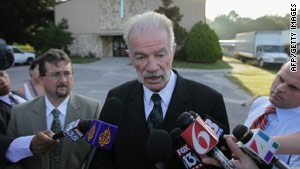by Matthew Carlos Vargas Stehney
Currently, Palestine is a figment of our imagination. While the Palestinian Authority government holds symbolic power over the West Bank, it operates at the discretion and pleasure of Israel and the United States. Without the blessing of these occupational regimes, there would not be a Palestine, let alone a Palestinian government. It exists because we think it exists, in one form or another, but it is far from being a self sustaining, independent entity that could exist whether the world liked it or not. Western governments have been hesitant to recognize an independent Palestinian state, but the international community as a whole generally supports such an idea. Unfortunately for the first-world Western powers, former client state and third-world countries are establishing their independence from the first-world West, often through instituting socialist programs and removing themselves from the influence of Western institutions such as the International Monetary Fund and World Bank. One such country is Brazil. In recent years, under the post-modern Socialist leader Luiz Inacio Lula da Silva, Brazil has established one of the world’s fastest growing economies and has quickly paid off its debt to the IMF, to the chagrin of first-world West who would have liked to maintain their influence in the region by forcing Brazil and surrounding countries to remain in debt. With this new found independence, Brazil has been able to voice its opinion, even when it is in opposition to traditional powers, and people are actually listening. This past weekend, the Brazilian imagination took a step beyond ours when it declared its recognition for a Palestinian state within the 1967 borders (when Israel occupied Gaza, East Jerusalem, and the West Bank). Because peace talks have stalled as a result of the continued expansion of Israeli settlements in Palestinian territories, one recourse that Palestinian Authority President Mahmoud Abbas has is to somehow get the United Nations to recognize a Palestinian state within the 1967 borders; Brazil’s recognition is a major first step in the process. The occupation of Palestine has been a contentious issue for the international community, especially the Muslim world. It is cited by Islamic extremists as one of the major grievances against the West, and especially the United States. Israeli settlement construction in occupied territories, according to Joel Beinin and Lisa Hajjar of the Middle East research & Information Project, “were understood by most Palestinians as marking out territory that Israel sought to annex,” in the final settlement of negotiations between Israel and the Palestinian Authority during the 1990s at Oslo. The mutual distrust at Oslo prevented any substantial agreement from being met between Israel and the Palestinian Authority, resulting in the Second Intifada (uprising) in 2000. With no gains made in the peace process, Beinin and Hajjar say that “top officials of the PA [Palestinian Authority] now say that UN resolutions must form the basis of future final status talks.” This is why our imagination is so important, and why the recent move by Brazil is critical for such resolutions. If more regional powers adopt resolutions recognizing the Palestinian state on the 1967 borders, the UN would have to stop dragging its feet and address this crisis head-on. As extremists call for war against Israel and its supporters, such a resolution could only help deter violence (though some extremists may just replace their antipathy toward the occupation to direct antipathy toward the existence of Israel, if they haven’t already), though reduced violence should not be the sole reason to support an independent Palestine. Developed and developing countries, with little historical interest in the Middle East, should follow Brazil and declare their support for human dignity and self determination in Palestine. As formerly oppressed, formerly colonized people begin to gain their own footing in a global market and political network, they must show their support for those who are still under colonial rule, and no colonial occupation is more thorough than that in the Palestinian territories.
See Also:
Beinin, Joel and Lisa Hajjar. "Palestine, Israel and the Arab-Israeli Conflict: A Primer." Middle East Research & Information Project (n.d.): www.merip.org.
"Brazil Recognizes Palestine." Al Jazeera English 5 December 2010: http://english.aljazeera.net/news/middleeast/2010/12/201012504256198565.html.








